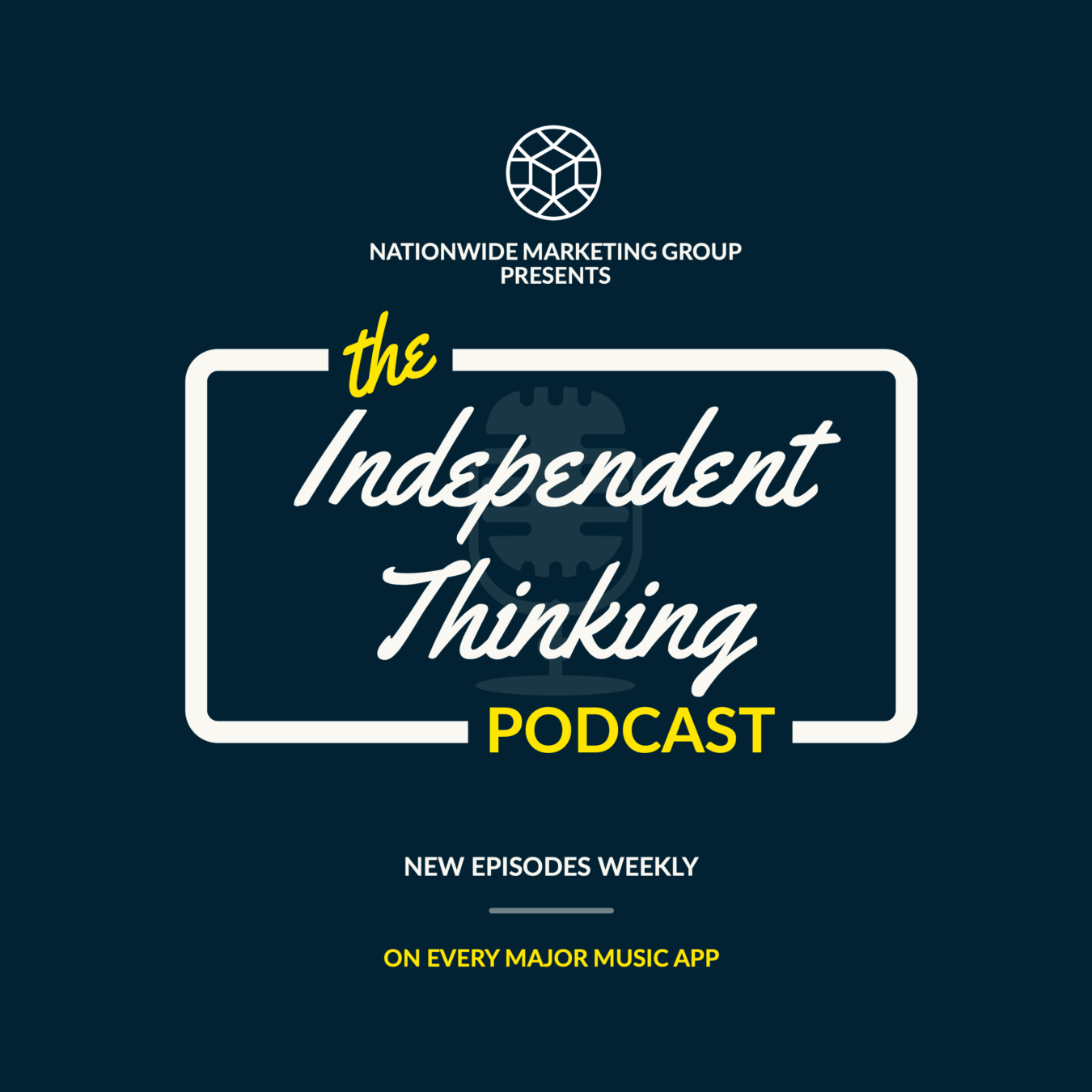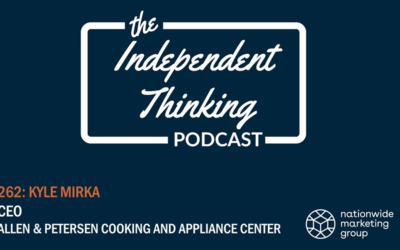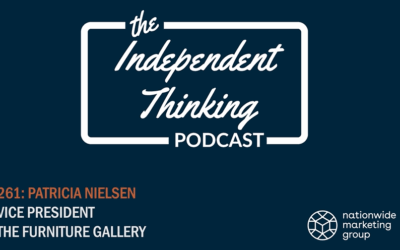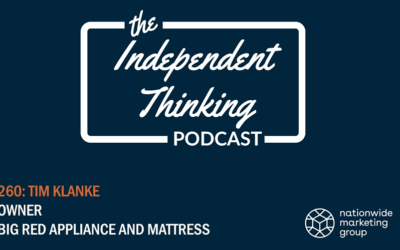Holly Wade, director of research and policy for the National Federation of Independent Business (NFIB), discusses recent trends in the group’s monthly jobs report, and how retailers can combat the growing challenge of a dried up labor pool.
Robb Stott: So one of the things we like to hit on as we get into discussions about the independent channel is looking at sort of trends and analysis and things that are happening in the wider space. And what better way to do that than by going to an organization that has plenty of research on that, and that’s the National Federation of Independent Businesses NFIB. And today we’re talking to Holly Wade, who’s the director of research and policy analysis for NFIB. So first of all, Holly, thank you for taking the time to call in and chat with us today.
Holly Wade: Wonderful. It’s great to be with you.
Robb Stott: Yeah. So before we dive into anything, you guys have some recent jobs reports and some interesting things that we want to get into, but before that, stepping back a little bit, can you tell us a little bit just for those listening, I imagine people that are members of Nationwide are listening, that are familiar with Nationwide, might also be familiar with NFIB, but kind of give us that elevator pitch on the organization and then a little bit about your role as well.
Holly Wade: Sure, absolutely. So the National Federation of Independent Business is the largest advocacy organization for small firms. Our members range in all industries and across the country, and we lobby on their behalf in Washington DC and also in the States. We’ve been around since the mid-1940s, started in California, moved to Nashville, but a lot of our operations are in Washington DC where I’m located. The research center has been around since the early or the late 70s, but our monthly small business economic trends survey, which is our flagship measure of the health of the small business economy, was started by our chief economist Bill Dunkelberg in October 1973. So since 1973 when it started out as a quarterly survey and then transitioned to a monthly survey in 1986, we’ve been measuring the temperature of the small business economy, asking a random sample of small business owners who are members of the organization about various types of operations, how sales are doing, employment, capital spending, financing, and then also what their single most important problem is currently and their general outlook for business conditions and the economy.
Robb Stott: That’s awesome. So that’s decades. And that was going to be sort of my follow up question there, was the jobs report. And you guys have decades then of data to kind of drawback on and look to as you look for trends in this space. And I mean, for someone that is director of research, that has to be exciting. And I’m not someone that deals with numbers per se, but I like to dive into reports. So it gets me excited to hear that there is literally that much data, decades of data that you guys could call back on.
Holly Wade: It is. It is definitely the gift that keeps on giving. I’m so thankful for our chief economist who decided to put this together in 1973. We were looking to have something to talk about on a regular basis that was current information about our members. And so he developed this survey. He previously was at the University of Michigan and worked on their consumer confidence survey. And so drawing on his experience there and as an expert on entrepreneurship at Stanford where he was a professor there, NFIB connected with him in California, and he created this survey for us so we would again have something current to talk about. And so it’s been wonderful to have this available to us ever since and not only looking at what’s currently happening with small businesses, but also the perspective, being able to look back, as you mentioned, and see where we are respective to where we’ve been, whether it’s during the recession in 2008, 2009, which is very different from where we are now, which was very different from where we were in the 90s and 80s, and looking at kind of the spikes and the different types of challenges facing small firms.
For instance, in the late 70s, early 80s, inflation was a huge problem. Financing was a challenge. And now we don’t see those as being the big headwinds for small firms. Right now the biggest challenge for almost a record number of small firms is finding qualified applicants to fill up in positions. So labor quality is the biggest challenge. Inflation is moderate, low-moderate at best. And that hasn’t been a challenge for many years, except for a blip in, I believe it was 2007, when oil prices spiked. And that was a bit of a challenge, but it was short-lived because then the recession hit soon after. But the tight labor market is certainly the biggest headwind to growth in the economy in the small business sector. And that’s where a lot of they’re facing a lot of challenges.
Robb Stott: Yeah. And that’s certainly something I want to dive into here soon. And as I think about my going back through your reports, the thing that stood out the most, but before we get to that, I want to ask you talked a little bit about how you guys collect this data and you go to your members. Getting maybe a little nerdy on the data collection side, but do you guys have a regular cast of members that you go to to complete the survey? Or is it a rotating group? How do you guys make sure that it is representative of small businesses across the country?
Holly Wade: Sure. So we’ve had the same system in place since the beginning. It is a random sample of the total membership of NFIB small business owners every month. So we randomly sample. Those who have been sampled in the previous month are eliminated from the pool for 12 months. We don’t want to overburden our members on surveys, but for the most part it is a random sample of the entire membership of NFIB every month. And then the survey is mailed. We still do this very old school.
Robb Stott: Wow.
Holly Wade: We mail the survey. We figure that every business has an address, and that’s the most predictable way of contacting our members when it comes to something like this. So everybody has a chance to fill out the survey and send it back to us. And then we compile the data, and the turnaround is pretty quick. It happens in about three to six days. And the first report that comes out is the employment report, or jobs report, and that comes out the Thursday before the BLS employment situation report is released. And then the full report is always the second Tuesday of every month. Whether it falls on a holiday or if somebody has the flu, it is always the second Tuesday of every month. So it’s very predictable. People follow it and look towards it as being a gauge of the health of the small business economy. And it’s wonderful that we can continue to provide this critical information.
Robb Stott: Yeah, certainly. And you talked about some of the ebbs and flows and challenges over time, but if you just look at the past quarter or so here, the later part of 2019 here, I mean, what is the, if you can kind of summarize it, the current state of the small business economy and sort of how things are going right now for small businesses?
Holly Wade: Well, I mean, so it varies a bit depending on which state they’re located. So some states have more challenges than others for small firms, but generally, the economy is moving forward. Things are looking good. Consumer spending and consumer confidence are high. And small business owners, the biggest challenge that most of them face and the most critical challenge that they face is related to the tight labor market, so finding qualified applicants to fill those positions, but also being competitive in making sure that they can retain current employees. So there’s a lot of competition out there with firms, small firms, bigger firms, trying to attract employees from other firms to fill their positions. So that’s pushing up wages. That’s pushing up kind of the cost of doing business, which they’re able to absorb for the most part because of strong sales and strong earnings. So that is certainly helpful. The regulatory environment and the tax environment for the federal government and in Washington DC has been quite favorable to small business owners. But for some of the state challenges, they are dealing with increased minimum wage. Some of the regulatory pushes in some states have been fairly aggressive, and that’s been a challenge for small firms. So a lot of those challenges are a bit more state-based than federal-based in the current situation.
Robb Stott: Certainly. And one thing you talked about, federal policy, I think one thing, especially in the retail side of things and then our members here at Nationwide, they are in bedding and furniture, but the areas related to tariffs that have come up-
Holly Wade: Sure.
Robb Stott: Appliances and consumer electronics for certain, it’s a theme we constantly hear when we’re out talking to members. So from your perspective, from NFIB’s perspective, what sort of impact has the tariff issue had on small businesses?
Holly Wade: So we’ve asked a tariff-related question, specifically China-related, two or three times over the last year, most recently in September. And about 32% of respondents, small business owners, said that they were negatively impacted by recent changes in China trade policy related to the tariff. And of the 32%, they’re certainly concentrated in a few industries, retail being one of them, wholesale, manufacturing, and construction. So those are the big four for our members, which for the economy generally those are the industries that are most negatively impacted by what’s happening with tariffs. And we’re seeing it with our small firms as well. And most of them are somewhat… The question is structured somewhat negatively impacted, significantly negatively impacted. Most are in the somewhat negatively impacted. And so they’re trying to navigate it and absorb the higher cost through strong earnings.
Oh, I’m sorry. And another, agriculture is the other industry that’s struggling with the tariff. But for the most part, they are somewhat negatively impacted. However, wholesale trade and ag are the two that have a higher percentage that are significantly negatively impacted. And how they’re adjusting to cost, we’ve asked a kind of basic question about what they’re doing to deal with it. And some are looking for different suppliers and trying to deal with it that way. Some have eliminated the product altogether-
Robb Stott: Wow.
Holly Wade: If it’s just one product in a larger line of products that they’re selling, but for the most part, they’re absorbing the cost. And so in the short term, that’s generally what happens with most businesses, especially small businesses. Absorbing the cost is the short term reaction to cost pressures, but then over time gets absorbed into either changing the operations of the business or passing those costs on in higher prices to consumers, which is always a bit of a more long term because in a short-term challenge, you’re still competing on prices with-
Robb Stott: Right.
Holly Wade: With everybody else. And so in the long term, it gets absorbed into higher prices. But right now most of them are absorbing it through strong earnings.
Robb Stott: Gotcha. So I don’t want to necessarily say par for the course, but it sounds like when you think about sort of how the wider industry and these businesses have fared recently, it sounds about right, I guess is one way to put it. But I want to turn back to what you talked about a little bit ago, and that was the biggest challenge that small businesses face, and it’s the finding qualified talent. Is it just a lack of talent in the job pool? Is it a small job pool? Why is this the big struggle for small businesses right now?
Holly Wade: Well, with a low unemployment rate, there are just fewer candidates to select from. It’s a smaller pool of candidates and then on top of that, the challenge of retaining your current workforce. So it’s kind of a two-prong challenge, attracting folks to fill up in positions, but also making sure that you’re competitive enough to not lose your current employees. And so they’re doing a number of things to help deal with the current situation. One is many have lowered the minimum qualifications that they would’ve previously had to fill those open positions and increasing their training programs. And so the training programs have been boosted by small firms putting a lot more energy into that. However, when a business is doing well, it takes time away from the owner and also their best employees to train less-skilled and to kind of up-skill those and bring onboard new hires.
And so it’s a difficult balance for owners to try to navigate that, especially when one of their bigger struggles is turnover, that their employees are finding other opportunities and moving to different jobs. And so balancing the amount of energy putting into training new employees that might not have the skill that would normally qualify you for that position versus paying more overtime or trying to figure out ways to be more productive within your operations. So it’s a bit of a complicated puzzle for many of them to navigate that. But training is a huge component of it. And also we’ve seen over the last year more and more small business owners are increasing compensation. I mean, that’s the obvious way to attract and retain employees, is to increase the benefits for those positions as well as they can do that.
And so we’ve seen record-high levels of owners increasing compensation and also planning to increase compensation. This last month in November, the plans to increase compensation were just one point below the record high-
Robb Stott: Wow.
Holly Wade: For the whole entire history of the survey. And in September 2018, I believe it was, actual compensation plans reached an all-time historic record high. So we’ve seen more and more trying to figure out ways to increase compensation in their firm as best they can, but also all the other types of tools that they have in training and trying to find creative ways to be productive and work within their business and operations to handle the increase sales, which is a great thing for our members and for the small business economy.
Robb Stott: Yeah, certainly. And it’s kind of interesting. You talk about how they’re handling it and handling this lack of qualified talent, like you said, not because it’s just the talents, there are less qualified people. It’s that less qualified, meaning that they’re not as qualified, but rather it’s just the quantity of them. As unemployment goes down, it’s drying up. But as they try to handle that and adjust and bring in people and then train them up, it’s kind of like you said, a double-edged sword where they need to fill those positions because they need people working for their businesses, but at the same time, as you train them up you got to designate or pull away some time from other employees, other professionals in your company that have to train them up.
Holly Wade: Yeah, exactly.
Robb Stott: So you’re almost caught in a catch 22 as a business owner.
Holly Wade: Exactly. I mean, we hear from our members all the time about having to balance the amount of time that they designate to training. A lot of it is the owner themselves doing it, but a lot of it ends up falling on their best employees because they are just better able to train, or their employees that have been there the longest have the most longevity and understand their business the best to help train. But the balance is very tricky. I mean, the most important resource of a business owner is their time in operating the business. And so more time that gets diverted to those, it’s taking away from the time of marketing the product or service and finding different opportunities or looking into expansion opportunities, things like that. So it is certainly a tricky situation for many of them.
Robb Stott: Tracking the level of unemployment, and obviously nationally speaking, it’s good to see unemployment low, but for the small business, I mean, aside from just following that national number, is this a seasonal problem? Does it kind of ebb and flow throughout the year? Or has it just been kind of getting progressively worse over time as unemployment… Sounds funny to say it’s getting worse, but worse for the small business.
Holly Wade: Sure.
Robb Stott: But as unemployment is getting lower, is it just getting harder for small businesses?
Holly Wade: It is. So it’s been fairly consistent over the last… About two years it started to ramp up that kind of the critical nature of those trying to fill up in positions, and then over the last year certainly it’s been a significant challenge for them to retain and attract applicants for those positions and then retain their current workforce. So over the last year, I mean, it’s certainly kind of added a fever pitch of concern and struggle for small business owners to do that. What they’re looking for certainly is because of the low unemployment rate, is to attract more people kind of off the sidelines into the workforce.
So those who were and maybe think well, compensation is looking pretty good right now, and maybe I could pick up a few hours here and there at the local bakery or the local hardware store and make some money, that’s helping. So we had a small uptick in the participation rate, labor participation rate, last month, which pulled a few more folks into the labor force, which was helpful. And that’s continuing, and that will likely continue. But we’re still going to be in a tight labor market. This is still going to be a challenge. And certainly, it goes along with a strong economy, which is what everybody wants, and that’s a good thing. But it is still a challenge.
Robb Stott: Certainly. And when you look at the industries that were impacted, because obviously like we have mentioned… And Nationwide obviously is retail. You guys kind of cover a few more industries, but retail still is one of those that is one of the higher impacted industries through your report based on the level of members that are reporting the talent level just isn’t there right now.
Holly Wade: Exactly. I mean, so one area that was very interesting this month specific to the retail industry was so, in the survey we have a question, what is your current single most important problem impacting your business? And we have nine kind of pre-answers, regulations, taxes, insurance, competition with big business, and a few others, and then another category. But labor quality has been kind of the big headline news for about a year and a half. Labor costs, however, have been kind of peaking every so often. The record high level I believe is 10%, so not terribly high. And we’ve reached that a few times over the last year. What was interesting about retail is last year, last month, sorry, in November and October, they reached record-level highs of the whole survey for labor costs as being the single most important problem to that industry group. And in November it reached 18%.
Robb Stott: Wow.
Holly Wade: So 18% of retailers in our survey are saying that labor costs are their single most important problem, which is probably a combination of certainly the tight labor market and kind of the compensation competitive part of it, but also with states increasing minimum wage.
Robb Stott: Right.
Holly Wade: So those two things combined I think are particularly challenging for retailers specifically because of many states and their aggressive push for higher minimum wage laws.
Robb Stott: Right, right. Well, as you mentioned a little bit ago, one way to kind of combat these issues, particularly the labor costs, is to perform well when you’re talking about retail at the point of sale and with customers buying. And I wouldn’t be able to let you go without talking about something that I know is important to you guys and us as well, and that’s we’re coming off a Small Business Saturday here not too long ago, and you talk about some record-setting-
Holly Wade: Absolutely.
Robb Stott: Performances, and I think… What was it? $19 billion I think was the estimated total that was spent on Small Business Saturday. So I mean, something’s going right for these small businesses.
Holly Wade: It is. Yes, it was a lot of money spent on Small Business Saturday. It was wonderful. It was wonderful to see. I think the campaign for Small Business Saturday has been building and the great partnership with American Express in advertising and highlighting the impact that small firms have on communities and local economies and how important they are kind of to the fabric of those areas. And so over the years it’s just built and built and built, and it was wonderful to see how supportive consumers were for Small Business Saturday and for small businesses across the country.
Robb Stott: Yeah. Awesome. 10th year I think is correct. So a decade of Small Business Saturday going on. So awesome to see.
Holly Wade: I believe so.
Robb Stott: Yeah. It’s awesome. So awesome to see those levels hit, the level of participation, but actually not just going to the stores and experiencing those small businesses, but spending consumers’ money and keeping it in the local economies is just something to be pretty impressed with and proud of I guess too as well, as small business owners.
Holly Wade: Exactly.
Robb Stott: So no, it’s awesome. Holly, I appreciate you taking the time to call in. Covered a lot of great stuff here. I mean, there are 18 million ways you could slice this data. I’m sure you guys have a lot of fun with it, and I do just reading the reports every month.
Holly Wade: We do. It’s been fun.
Robb Stott: So appreciate you taking the time to spend just a few minutes with us here and chat about this. So it was enlightening and certainly something I think we’ll continue to follow.
Holly Wade: Wonderful. Well, it was great talking with you. Thank you.




